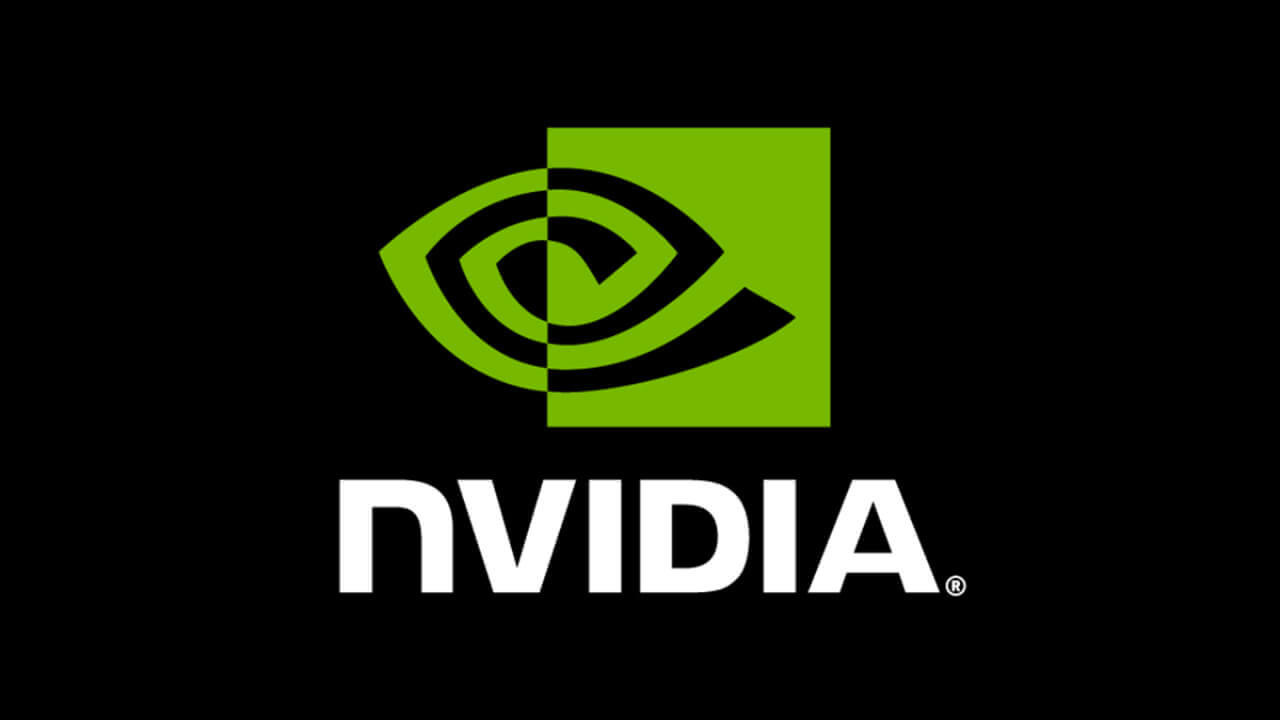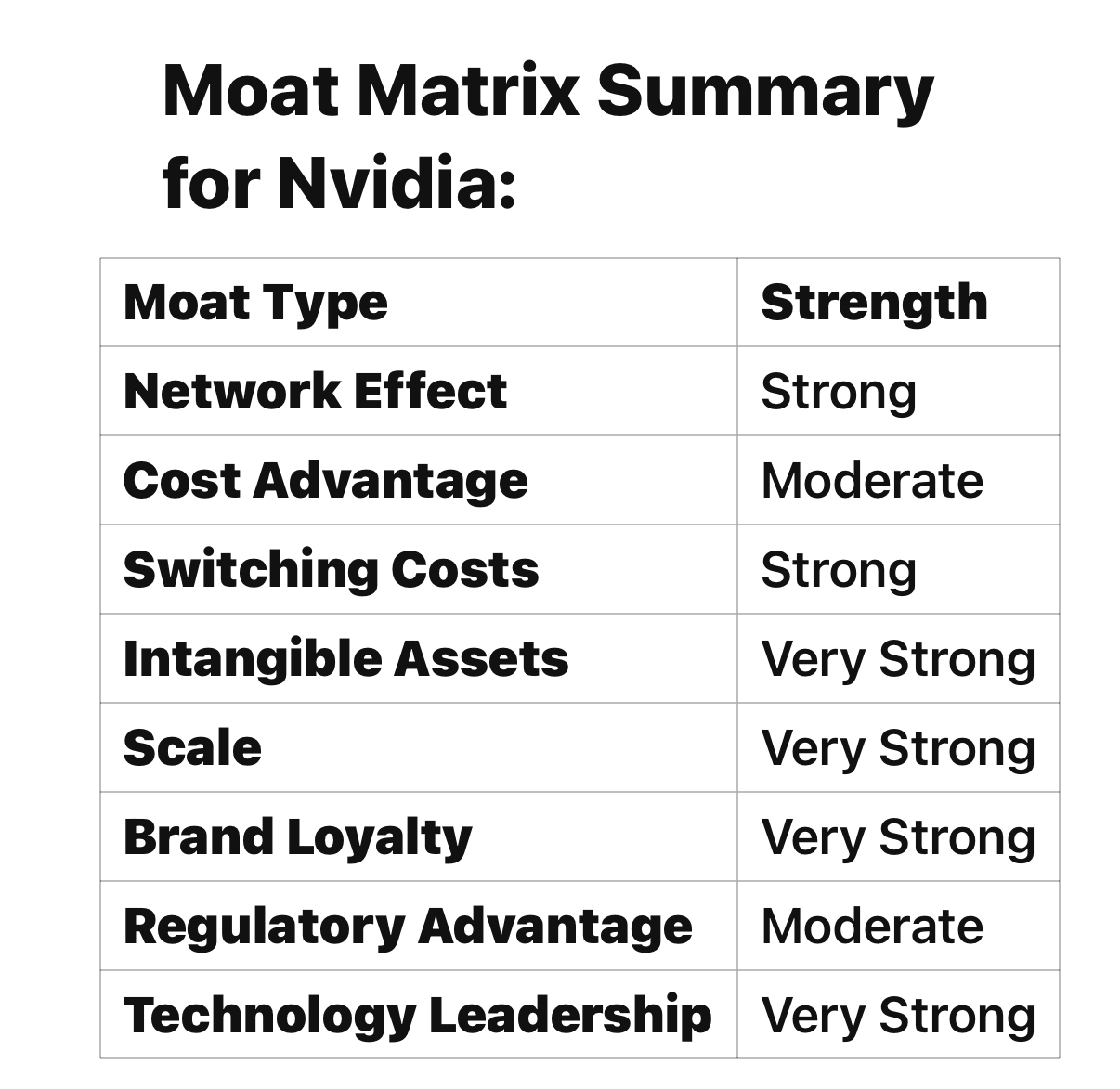Here’s a simplified moat matrix for Nvidia:
1. Network Effect
• Strength: Strong
• Nvidia benefits from a strong network effect in areas like its gaming ecosystem (GeForce), cloud computing (NVIDIA A100, etc.), and AI/ML frameworks. The more developers, gamers, and data centers adopt Nvidia’s GPUs, the more applications, games, and solutions are optimized for Nvidia hardware, strengthening the company’s market position.
2. Cost Advantage
• Strength: Moderate
• While Nvidia has strong operational efficiency, its cost advantage isn’t as significant as some other companies. The high cost of designing advanced GPUs and reliance on foundries like TSMC for production can limit its cost leadership compared to competitors like AMD. However, Nvidia’s ability to charge a premium for high-performance GPUs gives it an edge in higher-margin markets.
3. Switching Costs
• Strength: Strong
• Nvidia’s ecosystem is designed to create high switching costs for customers. Once developers and companies integrate Nvidia’s CUDA platform or deep learning tools, it becomes costly to switch to a competitor. This is particularly true in industries relying on specialized hardware for AI, ML, and data processing.
4. Intangible Assets
• Strength: Very Strong
• Nvidia boasts strong intellectual property (IP) through its hardware (GPUs) and software technologies (CUDA, cuDNN, etc.). Its brand reputation as a leader in high-performance computing (especially for AI and gaming) is a major intangible asset that gives it an edge in the market. Nvidia’s deep R&D investments have resulted in key patents that provide a significant competitive advantage.
5. Scale
• Strength: Very Strong
• Nvidia has an enormous scale in terms of both its hardware sales (with market dominance in gaming, AI, and data centers) and its R&D. Its massive reach and ability to leverage economies of scale in production give it a durable competitive advantage over smaller rivals. This scale allows for more aggressive pricing strategies and a leading position in GPU design.
6. Brand and Customer Loyalty
• Strength: Very Strong
• Nvidia has a very loyal customer base, particularly in the gaming industry, where its GeForce GPUs dominate the market. The company also enjoys strong brand recognition in AI and deep learning markets, where Nvidia’s GPUs are often considered the de facto standard for high-performance computing.
7. Regulatory Advantage
• Strength: Moderate
• While Nvidia is subject to industry regulations, particularly around data privacy, AI ethics, and semiconductor supply chains, its regulatory environment doesn’t currently present a significant moat. However, regulatory considerations related to mergers and acquisitions (e.g., attempted ARM acquisition) can impact its competitive positioning.
8. Technology Leadership
• Strength: Very Strong
• Nvidia is widely regarded as the leader in graphics processing and AI computing. It consistently innovates with products like the RTX series for gaming, the A100 for AI, and new architectures like Hopper and Ada Lovelace. Its leadership in both hardware and software for AI (via CUDA and libraries) places it far ahead of most competitors.


103998930 : just use ChatGPT to give you a Moat summary, its better than "Strong, Very strong... " lol